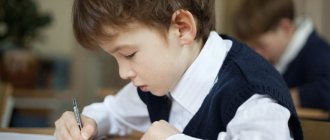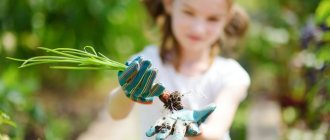Educational and creative project “The Book is Our Friend” for older children
Educational and creative project “The Book is Our Friend” for children in the senior group of kindergarten.
Author: Ivanova Anna Aleksandrovna, teacher of the State Budgetary Educational Institution kindergarten No. 77 of the Primorsky district of St. Petersburg. Project name : “The book is our friend.” Type of project : educational, creative, group. Project participants : pupils of the senior group “Rainbow”, kindergarten No. 77 of the Primorsky district of St. Petersburg and their parents. Project implementation period : 3 months.
I Introduction.
Relevance: Modern children, unfortunately, are less and less interested in books. They are simply not interested in spending the evening reading a book if there is an alternative in the form of a screen or monitor. And it also happens that I would be glad, but there is nothing to read, because there are simply no books at home. Due to the lack of experience with a book, it also results in rough handling. The child’s vocabulary suffers, imagination does not develop, and there is no interest in learning to read. What fate awaits paper books? The forecasts are disappointing, to my deep chagrin. And so that paper books do not disappear, it is simply necessary to bring children and books closer together; Help children love reading. Environmental protection issues are also important. But it is in childhood that issues of environmental culture need to be laid down. Why collect waste paper? How can old newspapers save a forest? We will try to find answers to all these questions in our project. The goal of the project: to educate children to love and respect books. Objectives: -Introduce children to: 1) types and purposes of books; 2) the paper production process; 3) book printing. — Provide knowledge about the stages of creating a book; clarify the role of writers, illustrators and designers. — Teach children to create a book with their own hands. — Develop creativity, imagination, fantasy. — Develop a caring attitude towards books made of paper. — Cultivate a love of books and the printed word. Predicted result: - Children have an idea of paper production. — Children’s caring attitude towards books and magazines. — Children's interest in books. Forms and methods of work: conversations, experimental activities, reading fiction, watching videos, drawing, writing stories and fairy tales. Working with parents: - Encouraging adults to read books to children at home every day. — Information about the location of the nearest children's library and assistance in enrolling a child in it. Product of project activity: 1) Creation of paper from waste paper. 2) Exhibition of drawings “At a paper processing factory”. 3) Creation of their own book by each of the students. Presentation of the project: at the pedagogical council;
holding an exhibition of books and drawings in a group. II. Project implementation
STAGE 1: preparatory.
1.Goal: Consider the books that are in the group. What types of books are there? What are they for?
Children find out that books have different appearances and different purposes. 2. Plot situation: A doll with books comes to visit the children.
Purpose: Find out from the appearance of the books how children handled them. Discuss the rules of behavior with books.
STAGE 2: main.
1. Purpose: viewing and discussing a video demonstrating the production of paper from waste paper at a paper processing plant.
2.Purpose: experiment on obtaining paper from old newspapers. Tasks: -soak small pieces of newspaper in water overnight.
-Mix soaked newspaper and water in a blender. The result is pulp, i.e. cellulose fibers with water.
-pour the pulp into a shallow, wide bowl and lower the sieve into it (a protective screen for splashes).
-after 5 minutes, take out a sieve covered with pulp and let the excess water drain for 15 minutes.
- place the sieve between two layers of towels and iron with a hot iron until the water stops evaporating.
-separate the wet sheet of paper from the sieve and leave to dry between two dry towels.
Discussion of the results obtained. 3.Purpose: viewing a presentation about printing, discussion. 4.Purpose: consultation of parents about the benefits of reading to children. A story about the nearest children's library and a recommendation to enroll your child there.
STAGE 3: productive activity.
1.Goal: Creating a book. — Composition or retelling of a fairy tale by a child. — Thinking through and sketching illustrations for the book.
— Book cover design. — Production of the finished book by the teacher (typing and printing the text, gluing it to the pages of the book, sewing on the cover). 2. Goal: Drawing according to the child’s plan: “How is paper made?”
II. Summarizing
1. Results obtained:
Children: - Showed great interest in the production of paper from waste paper. Some repeated the experiment at home. — Four children began collecting unnecessary papers at home to take them to a waste paper collection point. — We began to treat books more carefully and took the initiative to glue up all the torn books in the group. — They listen carefully to books being read aloud and show great interest in learning to read independently. — They continue to independently create their own books. Parents: - Several children were enrolled in the library and visit it with their family. — Children's book corners are organized at home, where children can easily access books. 2. Products of project activities: - Exhibition of drawings in a group.
— A presentation of the project was organized at the pedagogical council. — Exhibition of books made by children in a group.
III. conclusions
During the “Book is Our Friend” project, the children got acquainted with the process of paper production; The process of the book's appearance was examined in detail. The children themselves also played the role of authors, illustrators and book designers. The knowledge that the children received during the project unusually stirred up the children’s interest in books. The children became interested in the book and loved spending time in its company. The book truly became a true friend and mentor for the children. This means that the goal of the project was achieved. I would like to end with the words of John Herschel: “Give a person a taste for reading and give him the opportunity to read, and you will inevitably make him happy...”
We recommend watching:
Educational project in kindergarten Project in kindergarten for older preschoolers 5-7 years old on legal topics Project in the senior group of kindergarten Project in the senior group on the topic “Trees and shrubs in spring”
Similar articles:
Project for children of the senior group “Our cheerful garden”
Project “Books are true friends”
Repeat 3-5 times; without moving their head, they look up and down, left and right;
close their eyes for 8-10 seconds, then open them, blinking frequently.
Children lay out fairy-tale characters on the “Cover” and stick them on.
Finger gymnastics “Berry”.
H
Raise your hand in front of you so that your relaxed hand is approximately at face level. The fingers are relaxed, hanging down.
I pick berries from a branch
With the fingers of your other hand, stroke each finger from the base to the very tip, as if removing an imaginary berry from it.
And I collect it in a basket.
Place both palms in front of you in a cup.
It will be a complete basket.
Cover one palm folded in a boat with another palm folded in the same way.
I'll try a little
I'll eat a little more.
One folded palm imitates a basket, with the other hand we take out imaginary berries and put them in the mouth.
The path to home will be easy!
This concludes our lesson. You all did a very good job! It turned out to be a very wonderful book.
Outdoor games
AT THE BEAR IN THE FOREST
Tasks:
To develop in children endurance, the ability to perform movements on a signal, and the skill of collective movement. Practice running in a certain direction, dodging, and develop speech.
Description:
A line is drawn on one side of the site - this is the edge of the forest. Beyond the line, at a distance of 2-3 steps, a place for a bear is outlined. On the opposite side is the children's house. The teacher appoints the bear, the rest of the children - at home. The teacher says: “Go for a walk! " Children head to the edge of the forest, picking berries and mushrooms, imitating movements and saying in chorus:
"By the bear in the forest,
I take mushrooms and berries.
And the bear is sitting
and growls at us.”
The bear is sitting in its place at this time. When the players say “Roars! "The bear gets up, the children run home. The bear tries to catch them - to touch them. The bear takes the caught one to his place. After 2-3 caught, a new bear is selected.
Rules:
The bear has the right to get up and catch, and the players have the right to run home only after the word “growls!” "
The bear cannot catch children behind the house line.
Options: Enter 2 bears. Put obstacles in the way.
HARES AND WOLF
Tasks:
To develop in children the ability to perform movements on a signal, to practice running, jumping on both legs, squatting, and catching.
Description:
One of the players is designated a wolf, the rest portray hares. On one side of the site, the hares mark their places with cones and pebbles, from which they lay out circles or squares. At the beginning of the game, the hares stand in their places. The wolf is at the opposite end of the site - in the ravine. The teacher says: “The bunnies jump, hop - hop - hop, onto the green meadow. They nibble the grass and listen to see if a wolf is coming.” The hares jump out of the circles and scatter around the site. They jump on two legs, sit down, nibble the grass and look around in search of the wolf. The teacher says the word “Wolf”, the wolf comes out of the ravine and runs after the hares, trying to catch and touch them. The hares each run away to their own place, where the wolf can no longer overtake them. The wolf takes the caught hares to his ravine. After the wolf catches 2-3 hares, another wolf is chosen.


